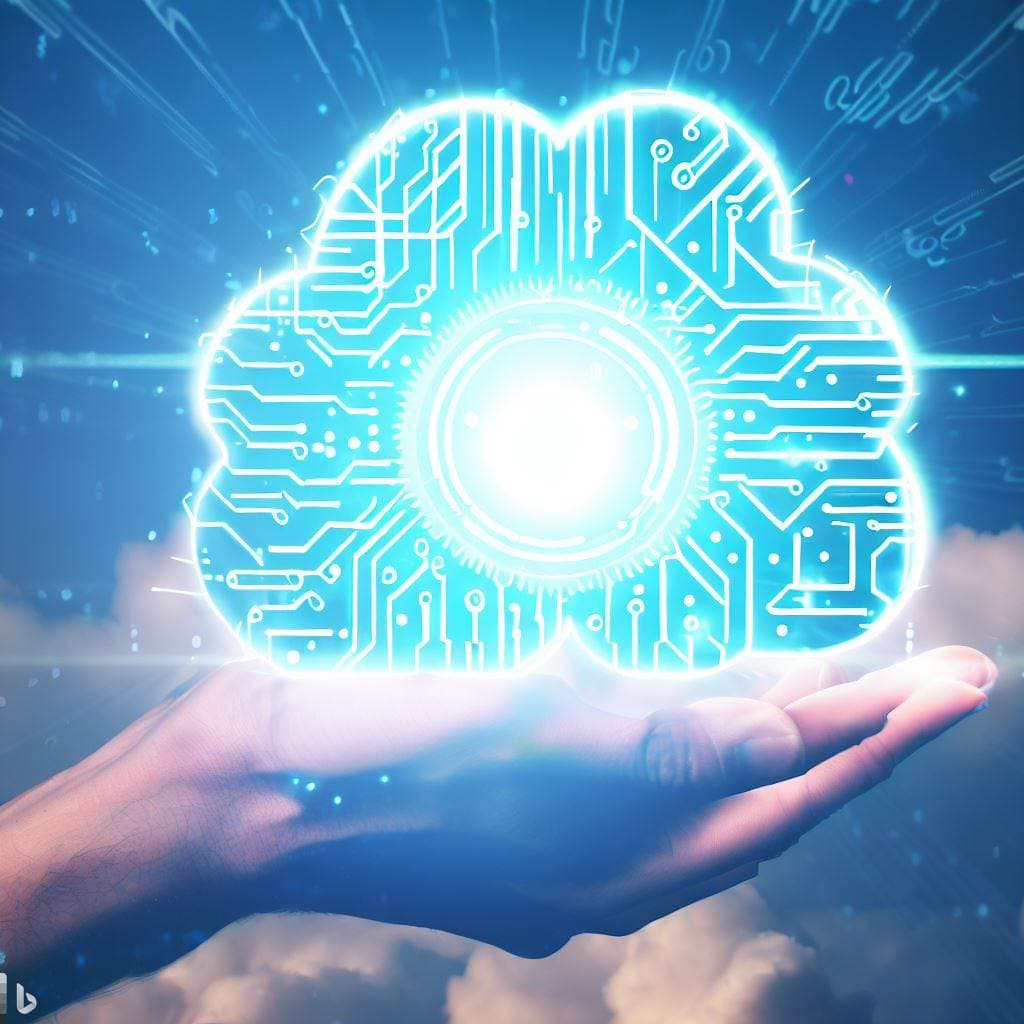Transforming AI Development: Databricks’ Seamless Integration of Retrieval & Generation.
Using MLflow AI Gateway and Llama 2 to Build Generative AI Apps
To build customer support bots, internal knowledge graphs, or Q&A systems, many organizations utilize Retrieval Augmented Generation (RAG) applications. These applications combine pre-trained models with proprietary data. However, there are challenges such as the absence of secure credential management and abuse prevention, which can hinder the widespread adoption and development of these applications. Databricks recently introduced the MLflow AI Gateway, a robust API gateway designed for scalability and enterprise needs. This gateway allows organizations to manage their LLMs (Language Models) and make them available for both experimentation and production purposes. The exciting news is that the AI Gateway has now been enhanced to better support RAG applications. This means organizations can centralize the governance of various model APIs, whether they are privately-hosted, proprietary, or open model APIs, ensuring the confident development and deployment of RAG applications.
In the article, Databricks provides a comprehensive guide on how to build and deploy a RAG application on their Lakehouse AI platform. They utilize the Llama2-70B-Chat model for text generation and the Instructor-XL model for text embeddings. These models are hosted and optimized through MosaicML’s Starter Tier Inference APIs. The RAG application they demonstrate answers gardening questions and provides plant care recommendations.
Key Takeaways:
- What is RAG? - RAG is a popular architecture that enhances model performance by leveraging custom data. It retrieves relevant data/documents and uses them as context for the LLM. It’s particularly effective for chatbots and Q&A systems that need to stay updated or access domain-specific knowledge.
- AI Gateway’s Role - The MLflow AI Gateway centralizes governance, credential management, and rate limits for model APIs. It offers a standardized interface for querying LLMs, making it easier to upgrade models as newer versions become available.
- Creating Routes with AI Gateway - The article provides code snippets to demonstrate how to create routes for the Llama2-70B-Chat and Instructor-XL models using MosaicML Inference APIs on the AI Gateway.
- Building the RAG Application - The process involves building a vector index from document embeddings for real-time document similarity lookups. The article showcases how to use LangChain to combine retriever and text generation functionalities.
For a deeper dive and a step-by-step guide on building such applications, you can explore the full article on Databricks’ website.
The advancements in AI and machine learning are poised to significantly enhance the capabilities of Retrieval Augmented Generation (RAG) applications in various ways:
-
Improved Model Performance: As AI models become more sophisticated, they can better understand and process complex queries. This means RAG applications will be able to retrieve more relevant information and generate more accurate responses.
-
Real-time Adaptation: Future RAG applications might be able to adapt in real-time to new information, ensuring that the generated content is always up-to-date and relevant. This is especially crucial for applications like news bots or financial advisory systems where timely information is paramount.
-
Domain Specialization: Advanced models can be fine-tuned for specific industries or domains, allowing RAG applications to cater to niche markets with high precision. For instance, a RAG application for medical diagnoses could be trained on vast medical databases to provide more accurate suggestions.
-
Enhanced User Interaction: With advancements in natural language processing, RAG applications will be able to understand user queries better, even if they are ambiguous or complex. This will lead to more natural and human-like interactions.
-
Multimodal Integration: Future RAG applications might integrate text with other data types like images, videos, and audio. For example, a query about a historical event could retrieve not just text but also relevant images, audio clips, or videos.
-
Scalability: As machine learning algorithms become more efficient, RAG applications will be able to handle larger datasets, leading to more comprehensive and detailed responses.
-
Security and Privacy: With growing concerns about data privacy, future RAG models will likely incorporate advanced encryption and anonymization techniques to ensure that user data is protected.
-
Reduced Bias: One of the criticisms of current AI models is their potential to perpetuate biases present in the training data. Future models will likely have mechanisms to identify and reduce these biases, leading to more fair and unbiased RAG outputs.
-
Integration with Other Technologies: RAG applications could be integrated with other emerging technologies like augmented reality (AR) or virtual reality (VR) to create immersive experiences. Imagine a RAG-powered virtual assistant in an AR setting guiding a user through a historical site with real-time information retrieval.
-
Cost Efficiency: As AI research progresses, there will be methods to achieve high performance with less computational power. This will make RAG applications more accessible and affordable for smaller businesses and individual developers.
In conclusion, the future of RAG applications is bright, with potential enhancements spanning improved accuracy, user experience, scalability, and integration with other technologies. As AI and machine learning continue to evolve, we can expect RAG applications to become even more integral to various industries and domains.
Ensuring the security and privacy of data, especially in the context of AI and proprietary information, is paramount for organizations. As AI systems often require vast amounts of data for training and inference, the potential risks associated with data breaches or misuse are significant. Here are some strategies and best practices organizations can adopt to safeguard their data:
- Data Encryption:
- At Rest: Encrypt data when it’s stored in databases, file systems, or cloud storage.
- In Transit: Use secure protocols like HTTPS and TLS to encrypt data as it moves between systems or over the internet.
- Data Anonymization and Pseudonymization:
- Remove or modify personal information from datasets to prevent identification of individuals. This is especially important for datasets used in public research or open-source projects.
- Regular Security Audits:
- Conduct periodic security assessments to identify vulnerabilities in the system. This includes penetration testing and vulnerability assessments.
- Access Control:
- Implement strict access control measures. Ensure that only authorized personnel have access to sensitive data and AI models.
- Use multi-factor authentication and robust password policies.
- Data Backup and Recovery:
- Regularly back up data and ensure there’s a recovery plan in place in case of data loss or breaches.
- Secure AI Training Environments:
- Use isolated environments for AI model training, especially when dealing with sensitive or proprietary data.
- Monitoring and Logging:
- Continuously monitor data access and system activity. Maintain logs to track any unauthorized or suspicious activities.
- Data Retention Policies:
- Define clear policies about how long data should be retained. Delete data that’s no longer needed, especially if it’s sensitive.
- Transparency and Consent:
- If collecting data from users, be transparent about how their data will be used. Obtain clear consent and provide options for users to opt-out.
- Regularly Update Software and Infrastructure:
- Ensure that all software, including operating systems, databases, and AI frameworks, are regularly updated to patch any known vulnerabilities.
- Employee Training:
- Educate employees about the importance of data security and best practices. This includes training on phishing attacks, secure coding practices, and the importance of not sharing passwords or sensitive information.
- Differential Privacy:
- Implement differential privacy techniques when sharing data analytics results. This ensures that the results don’t reveal information about individual data entries.
- Federated Learning:
- Instead of centralizing data for AI training, use federated learning where the model is trained at the data source and only model updates are shared. This reduces the risk of data exposure.
- Third-party Assessments:
- Consider getting certifications or assessments from third-party organizations that specialize in data security standards, such as ISO 27001 or SOC 2.
- Incident Response Plan:
- Have a clear plan in place for how to respond to security incidents or data breaches. This includes communication strategies, technical response plans, and legal considerations.
In the era of AI and big data, the importance of data security and privacy cannot be overstated. Organizations need to be proactive and adopt a multi-faceted approach to protect their valuable data assets and maintain trust with their users and stakeholders.
Retrieval Augmented Generation (RAG) applications, which combine the power of information retrieval with advanced language generation, have potential applications far beyond just customer support and Q&A systems. Here’s how they can be adapted and utilized in various industries:
- Healthcare:
- Clinical Decision Support: RAG can help doctors by retrieving relevant medical literature or patient history and generating potential diagnoses or treatment recommendations.
- Research: Assist researchers in quickly finding relevant studies or data and summarizing findings.
- Finance:
- Market Analysis: RAG can retrieve relevant financial news, reports, and historical data to generate insights or predictions about market trends.
- Risk Assessment: By pulling data from various sources, RAG can help in generating comprehensive risk profiles for investments.
- Legal:
- Case Research: Lawyers can use RAG to retrieve relevant case laws, statutes, or legal literature and generate summaries or insights.
- Contract Analysis: RAG can help in reviewing contracts, identifying standard clauses, and suggesting modifications.
- Education:
- Personalized Learning: RAG can retrieve content based on a student’s learning level and generate personalized study materials or quizzes.
- Research Assistance: Assist students and researchers in finding relevant academic papers and summarizing key points.
- Media and Entertainment:
- Content Creation: RAG can assist writers by retrieving relevant background information and suggesting plot points or character developments.
- Recommendation Systems: By pulling data from various reviews and user preferences, RAG can generate personalized content recommendations.
- Retail and E-commerce:
- Product Recommendations: RAG can retrieve product specifications, reviews, and user preferences to generate personalized shopping suggestions.
- Supply Chain Management: By analyzing data from various sources, RAG can provide insights into inventory management, demand forecasting, and supplier evaluations.
- Real Estate:
- Property Analysis: RAG can pull data from various listings, historical sales, and local news to generate comprehensive property profiles or market analyses.
- Travel and Tourism:
- Travel Planning: RAG can retrieve information on destinations, reviews, weather forecasts, and cultural events to generate personalized travel itineraries or suggestions.
- Manufacturing:
- Quality Control: By analyzing data from various stages of the manufacturing process, RAG can provide insights into potential quality issues or suggest process improvements.
- Supply Chain Optimization: RAG can analyze data from suppliers, inventory levels, and demand forecasts to suggest optimizations in the supply chain.
- Agriculture:
- Crop Management: RAG can pull data from weather forecasts, soil analyses, and historical crop yields to generate recommendations for planting, irrigation, and harvesting.
- Research and Development:
- Innovation: RAG can assist researchers by retrieving relevant prior art, research papers, or patent databases and generating insights or potential areas of exploration.
- Public Services and Governance:
- Policy Making: RAG can assist policymakers by retrieving data on social indicators, previous policy outcomes, and public opinions to generate policy recommendations or impact assessments.
In essence, any industry that relies on the synthesis of vast amounts of information to make decisions or generate content can benefit from RAG applications. The key is to adapt the retrieval and generation mechanisms to the specific needs and nuances of each industry.
Further Reading






Comments